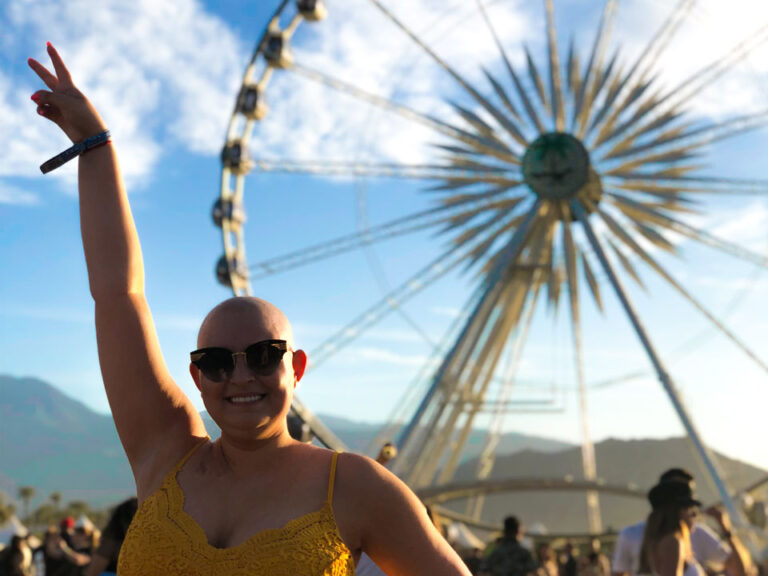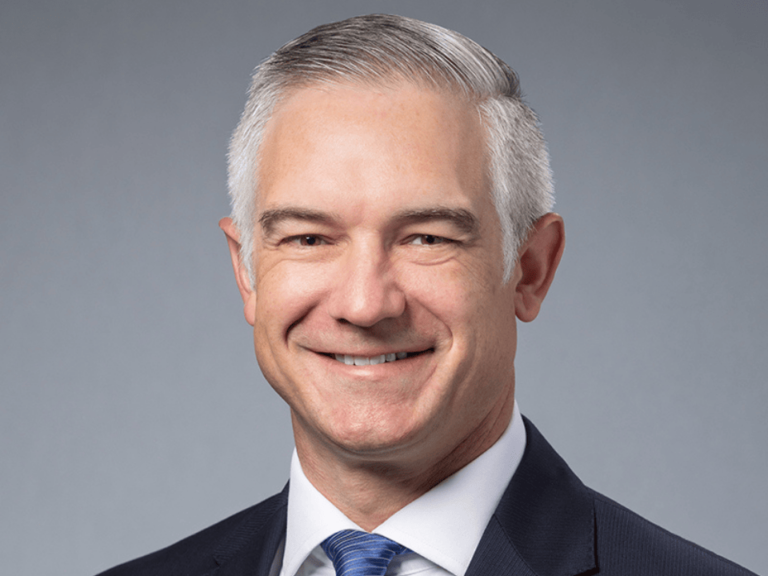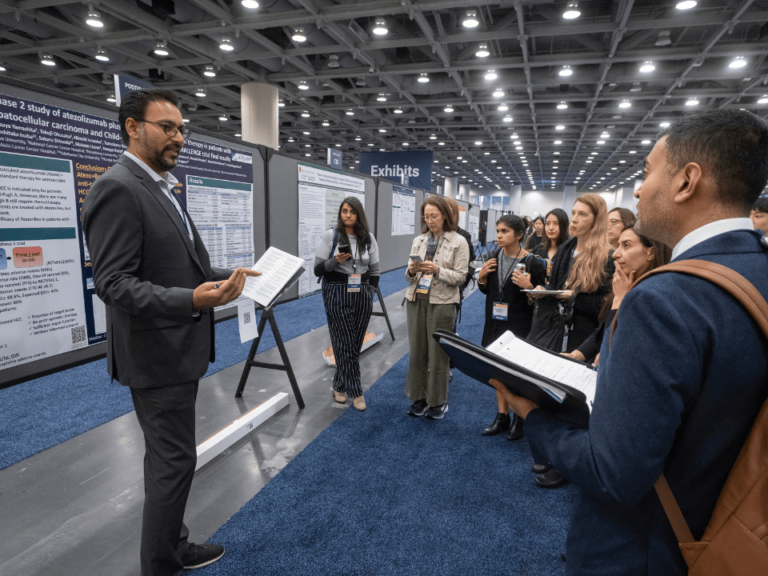Congress has been good to biomedical research over the past three years.
The NIH budget has gone up by 23 percent between 2016 and 2018, the 21st Century Cures Act has been passed, the Biden Moonshot continues into the Trump administration, and the FDA cancer center has been formed.
What changed? Why such success after a 13-year dry spell marked by flat budgets?
Washington insiders say at least some of the credit belongs to a philanthropist who had been determined to stay under the radar, and succeeded at doing so until legislative victories made his role hard to miss.
An argument can be made that Jed Manocherian, a real estate investor and developer, was ratted out by his success. Over the past four years, ACT for NIH, an organization Manocherian founded, has been channeling political clout to advance NIH.
In a conversation with The Cancer Letter, Manocherian said he became interested in securing funding for NIH when he joined the Board of Visitors at MD Anderson Cancer Center.
“Through this service, I learned about the enormous promise of biomedical science to ease human suffering,” said Manocherian, whose company, Woodbranch Investments, holds property in New York and Texas. “I also learned about the alarming erosion of federal support for the National Institutes of Health, the most important biomedical research agency in the world.”
The interview, a first for Manocherian in his role as an advocate, is posted here.
The key thing to understand about Jed Manocherian is that he does this for no other reason than he wants to help end human suffering. He is truly special—driven, generous in recognizing others, collaborative with other advocacy groups, respectful of others, and humble.
Ronald DePinho
“When I first met [Sen. Roy] Blunt (R-MO) in 2014, he envisioned a doubling of the NIH budget in the next 10 years, and he is not alone,” Manocherian said to The Cancer Letter. “There is an ever-increasing number of NIH congressional champions who understand the tremendous promise of science to enhance the health and wealth of our nation. Our role is simply to support their vision.”
When he founded ACT for NIH in 2014, Manocherian hired Patrick White, then the associate director for legislative policy and analysis at NIH, to run the organization.
“Jed and Pat played key roles in helping me shape and pass the 21st Century Cures Act,” said Rep. Diana DeGette (D-CO), who sponsored the measure with Rep. Fred Upton (R-MI) in 2014. “Their dedication to advancing and funding biomedical research through this legislation was truly inspirational.
“It was a bipartisan, bicameral effort requiring energy, creativity, passion and commitment,” DeGette said to The Cancer Letter. “Thanks to Jed’s vision and Pat’s expert guidance, they made a real impact—we couldn’t have done it without them.”
Last month, congressional appropriators added $3 billion to NIH, the biggest increase in 15 years since the doubling effort led by John Porter, who was a key congressional appropriator and House representative from the 10th district in Illinois. Combined with the $2 billion increase in 2016 and another $2 billion in 2017, the textbook 25 percent inflationary loss to the NIH budget has been halved to 13 percent—from $8.6 billion to $4.8 billion.
It was, some say, a confluence of factors: pro-NIH congressional leaders, economic upturn, leeway in budget negotiations, and, as in the past, advocates eager to lobby. Even so, it was not pure luck that Manocherian’s goal to obtain 10 percent annual increases for NIH had coincided with the $7 billion raise over three years, bringing the budget to $37.1 billion.
Manocherian has been compared to Mary Lasker, a philanthropist who was the leading campaigner for the National Cancer Act, and Michael Milken, a financier who used Hollywood glitz and public activism in an effort to build a grassroots constituency for cancer research.
Lasker was a high-profile socialite, famously a friend of Lady Bird Johnson during the Johnson presidency. Indeed, Lasker’s advocacy led to the National Cancer Act of 1971, the fundamental document of the war on cancer. Milken’s efforts culminated in the 1998 “march” on Washington, which some credit with the start of the doubling of the NIH budget.
The most significant role in all of this was led by Jed. There’s no way to understate his role and I’m not somebody that overstates. I have no motive here but to be completely truthful with you.
Tom Johnson
And yet, Manocherian’s efforts are different from Lasker’s and Milken’s. For starters, it’s not publicly known whether anyone in his family has had cancer. By contrast, it’s hard to miss the fact that Mary Lasker’s husband, Albert, had died of colon cancer, and that Milken had prostate cancer. Milken is a member of the ACT for NIH advisory committee.
But more importantly, Manocherian clearly prefers to work behind the scenes.
Manocherian’s family has been active in philanthropy and advocacy on societal issues, said Ronald DePinho, the Harry Graves Burkhart III Distinguished University Chair and professor in the Department of Cancer Biology at MD Anderson, and former president of the cancer center. Jed Manocherian’s brother is involved in wildlife conservation, and their father founded the National Road Safety Foundation more than 50 years ago.
“ACT for NIH’s success stems directly from the countless one-on-one meetings with members of Congress to educate them on why we must recommit our nation to a sizeable investment in research, discovery of treatments and cures to avert losing America’s greatest scientific minds to other industry sectors or to other nations,” DePinho said to The Cancer Letter.
In 2016, the Manocherian family poured close to $2 million into political contributions, placing them in the Top 20 Club of individual contributors, according to OpenSecrets.org. In the 2018 election cycle, Manocherian has thus far contributed $553,500 to candidate campaigns and political action committees (The Cancer Letter, March 30).
“The key thing to understand about Jed Manocherian is that he does this for no other reason than he wants to help end human suffering,” DePinho said. “He is truly special—driven, generous in recognizing others, collaborative with other advocacy groups, respectful of others, and humble.
“Most importantly, congressional champions like Roy Blunt, Sen. Patty Murray (D-WA), Rep. Tom Cole (R-OK), and Rep. Rosa DeLauro (D-CT) were already focused on the dire need to restore NIH, and ACT for NIH helped build broad bipartisan support,” DePinho said. “Without these visionary leaders, our new investments in our future would not have occurred.
“This is a great example of Congress working together for the people. We owe these congressional leaders, Jed Manocherian, Pat White, the ACT for NIH team and the community advocacy organizations an enormous debt of gratitude. Lives will be saved thanks to their devotion to others.”
While DePinho’s presidency at MD Anderson was marked by turbulence and controversy, his influence on the national level is emerging as game changing.
“When I first met Ron in New York, he was the incoming president of MD Anderson, and he outlined his bold vision for what became the cancer moonshots program,” Manocherian said. “Some people thought it was too bold and ambitious, but I thought it was absolutely brilliant, and it is proving to be transformative. On many levels Ron is a true innovator and he will continue to have a major impact in ‘making cancer history’ both on a national and global level.”
In addition to bringing Manocherian on the scene as an advocate for NIH and the 21st Century Cures Act, DePinho recommended his former colleague Norman “Ned” Sharpless for the NCI directorship (The Cancer Letter, Aug. 4, 2017).
Also, even as MD Anderson’s Cancer Moon Shots took fire in Houston, former Vice President Joe Biden took inspiration from DePinho, and, in fact, the federal government licensed the trademark for the Beau Biden Cancer Moonshot.
Congress has authorized $1.8 billion over seven years for the national initiative, which was incorporated into the Cures Act at the end of the Obama administration (The Cancer Letter, Dec. 16, 2016). The FY18 omnibus allocates $496 million for the Cures Act, of which $300 million goes to the Moonshot, fully funding it for a second year (The Cancer Letter, March 23).
“There were so many champions in this process that deserve accolades including Ron, who played a significant role,” said Ellen Sigal, founder and chair of Friends of Cancer Research. “He and Jed were relentless on a bipartisan, bicameral basis in dealing with the importance of funding NIH.
“Jed was instrumental in getting multiple stakeholders involved in the Cures Act from the grasstops and grassroots,” Sigal said to The Cancer Letter. “Jed has a great understanding of what has to be done for NIH and he isn’t disease-centric—which many of us can be—he has a big vision for research. He understood that all boats rise and fall on the importance of research and the investments in research.
“Jed is selfless. He’s very quiet and very focused on the mission, the deliverables, and definitely does not like to call attention to himself and what he’s done. He’s highly modest.”
Manocherian has the support of other members of MD Anderson’s Board of Visitors, who also used their political connections and resources to advance his advocacy agenda, said Tom Johnson, a member of the board, and formerly the president of CNN, publisher of the Los Angeles Times, and executive vice-president of Texas Broadcasting Company.
“As I recall, Ron DePinho basically established with the board the history of what’s happening with NIH funding, and the importance of NIH, not just to MD Anderson, but to all health-related issues,” Johnson said to The Cancer Letter. “He introduced Jed to us. Most of us had not met Jed. I mean, we’ve read about him in some profiles on him, but the more I listened to Jed, to his commitment, to his willingness to take a leadership role, and to his passion for it, I think I just became one of many people around that table that said, ‘Let’s do what we can. This is one that can benefit all of us.’
“I went down a list of various people with whom I have longtime friendships. Even though I’m a Democrat, one of my close friendships over the years—going back to my time working in the Lyndon B. Johnson White House—was with Sen. Lamar Alexander (R-TN), and in fact, it led to Lamar coming and speaking to our board later.
“We went to work, and we first indicated to Jed that, ‘Yes, we are enthusiastically behind you,’ and second, we realized that while this is not a campaign for MD Anderson alone, this is a campaign for all health care, we realized that we have a board made up of some of the finest—and I think some of the most bipartisan—people in the country. Let’s do what we can. There’s just a tremendous upside to supporting Jed and a tremendous downside if we let the funding continue to be cut.
“The most significant role in all of this was led by Jed. There’s no way to understate his role and I’m not somebody that overstates. I have no motive here but to be completely truthful with you. Jed deserves a Presidential Medal of Freedom for what he’s doing, and it will have implications for decades to come.”
Manocherian’s role as the “quiet storm” cannot be understated, said Margaret Anderson, former executive director of FasterCures.
“I certainly believe that luck plays a part in a lot of things in life,” Anderson said to The Cancer Letter. “But luck plus preparation—I feel what Jed and Pat have brought to this issue is diligent preparation in terms of just educating, meeting, and being strategic about who needs to understand what the NIH does.
“With Jed, they’ve assembled this dream team of intelligence with the operational ability to navigate and get things done,” said Anderson, who is now a managing director at Deloitte Consulting. “In your articleabout Nancy Pelosi, even when she said that about the $3 billion, I’m not sure that everybody in the room was saying, ‘Oh yeah, sure, that’s going to happen.’
“Budgets change with circumstances, but Jed and Pat’s ability to stay the course and continually push for increases with their kind of caliber of work—that’s fairly extraordinary to me,” said Anderson, who joined the ACT for NIH. board earlier this year. “I just want to punctuate that point about their deep humility and passion for this mission, and it’s because they so believe in why they’re doing it, in the cause.”
In early conversations with Manocherian, DePinho said he discussed how a revolution in science would transform the prevention and treatment of cancer.
“He, like many others, was surprised to learn of our nation’s steady decline in NIH funding at a time of great opportunity. He learned about the $5 billion NCI budget and very low grant success rates,” DePinho said. “He remarked that it doesn’t make sense that we spend $400 billion on a fighter jet program, and $5 billion on cancer, which kills 600,000 Americans every year. This fact, coupled with his desire to help others and his can-do nature, led to the founding of ACT for NIH.
“In fact Jed’s initial idea was to double the NCI budget, but his engagement with these groups made him quickly realize that this needed to be done through NIH. He recruited Pat White, who has been brilliant in educating our legislators and their staff. As a vice chair of the BOD, I have been privileged to see first-hand how Jed and Pat worked across the aisle, sought support and guidance from members of the MD Anderson Board of Visitors, and engaged many other research advocacy groups, to get the job done.”
As was the case with Mary Lasker, Manocherian has the interest and skills to work with a multifaceted community of advocates, said Mary Woolley, president and CEO of Research!America.
“It was immediately apparent to me when I met Jed that he is not about putting himself in the spotlight or being a celebrity of sorts, but rather about getting the job done and being persistent and determined in that way,” Woolley said to The Cancer Letter. “Not just talking it but doing it. And that goes back to the willingness to spend his own time and money. And that matters. It really speaks volumes.
“Right from the start, people who knew Jed got in touch with me when they were hearing about some of his ambitions and passion for the cause for NIH. The analogy they drew is one that I have found holds up quite well, that is, he reminded them of a man named John Whitehead who came forward in the 90s to do something similar for NIH, and the predecessor before that is Mary Lasker, quite famously.
“They were people fortunate enough to have accumulated some wealth to put their own time and money into making NIH a priority for this nation. Similarly, all three of them kind of went from a particular, more focused interest, to a broader view of NIH, writ large, and carrying on their advocacy activities for the whole rather than, for example, cancer research only or basic research. They adopted this broader scope so that we don’t get the advocacy community into a rob-Peter-to-pay-Paul kind of scenario, especially since all of us, and our families, are afflicted with more than one disease.
“When Jed came on board, he really put his shoulder to the wheel. And that was a good coincidence of timing because that was the point at which to key leaders in Congress stepped into their role as chairs of appropriations. It takes a village, but you know that leaders are hugely important. They’re the kind of leaders—Tom Cole, Roy Blunt—whose names will be on a building at NIH one day.
“Then, somebody like Jed comes along and says, ‘I’m going to make a difference here, try to set a high bar, assemble some smart people to work with me, make friends in the community, and get to work and not have it be all about me.’”













